In our modern, fast-paced world, headphones have become a ubiquitous accessory—whether for work, exercise, or leisure, they offer a private soundscape that keeps us connected. However, extended periods of headphone use can lead to a series of health challenges that are often overlooked. In this post, we dive deep into the potential impacts of long-term headphone wear, from compression headaches and impaired hearing to wax blockages, vertigo, and even auditory hallucinations. By understanding these risks, you can adopt safer practices to protect your health while still enjoying your favorite tunes or podcasts.
Compression Headaches: How Prolonged Headphone Use Affects Your Scalp and Neck
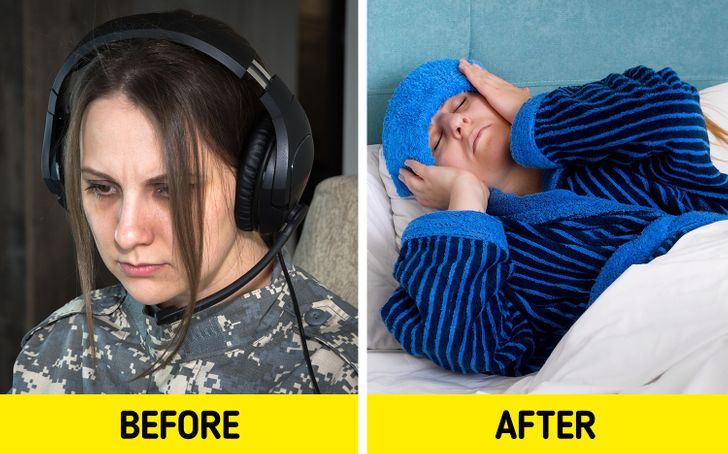
Wearing headphones for extended periods, especially those that tightly fit around your head, can result in what is commonly known as a compression headache. This discomfort arises when constant pressure from the headphone’s band or ear cups leads to reduced blood circulation around the scalp and neck area. The repetitive strain and tension can cause pain and even affect your posture over time.
Understanding Compression Headaches:
When you wear headphones that are too tight or for too long, the pressure can stimulate nerve endings in the scalp. This continuous stimulation might trigger headaches that can range from mild discomfort to severe pain. Studies have shown that repeated pressure on the head can lead to localized tenderness and inflammation, which are known factors in developing chronic headaches. For more detailed medical insights on tension headaches, you can explore resources available on Mayo Clinic and WebMD.
Prevention and Relief:
- Adjust the Fit: Ensure your headphones have adjustable bands to relieve undue pressure.
- Take Regular Breaks: Implement the 60/10 rule—60 minutes of listening followed by a 10-minute break.
- Use Over-the-Ear Designs: Consider switching to lighter models that distribute weight evenly.
Incorporating these preventive measures can significantly reduce the risk of developing compression headaches while allowing you to enjoy uninterrupted listening sessions.
Impaired Hearing: The Long-Term Effects of High Volume and Extended Use
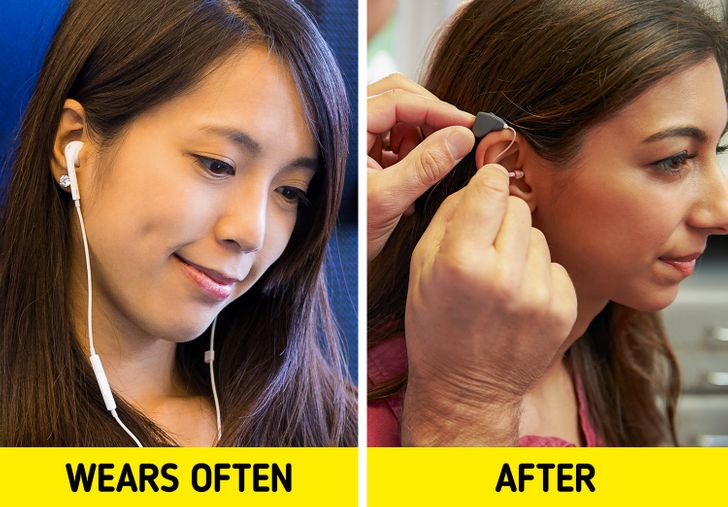
One of the most significant risks of prolonged headphone use is impaired hearing. Listening to music or audio at high volumes for long durations can damage the delicate hair cells in your inner ear, leading to permanent hearing loss. This phenomenon is known as noise-induced hearing loss (NIHL) and is a major concern for audiologists and health professionals alike.
How High Volume Affects Your Ears:
Sound is measured in decibels (dB), and exposure to levels above 85 dB for extended periods can be harmful. Many modern headphones, especially those marketed as “noise-cancelling” or “wireless,” offer crisp, clear sound, but they can also tempt users to crank up the volume. Over time, this can result in the deterioration of auditory nerve function and reduced hearing sensitivity. Learn more about the dangers of high-decibel exposure at Healthy Hearing.
Protective Measures:
- Volume Control: Keep your volume at 60% or lower.
- Limit Listening Time: Even at lower volumes, long exposure can be harmful; consider using volume-limiting features on your devices.
- Invest in Quality Headphones: Opt for headphones with good sound isolation so you don’t have to raise the volume to overcome background noise.
Using these strategies can help preserve your hearing health, ensuring that you continue enjoying audio without the risk of long-term damage.
Earwax Blockage: How Overuse of Headphones Can Impact Ear Health
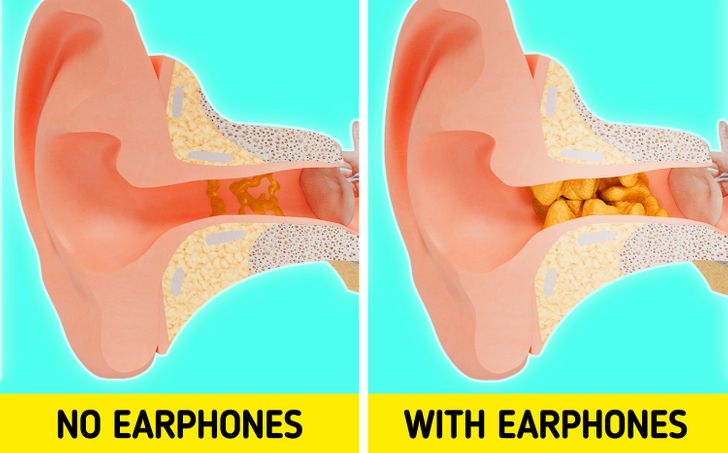
A less-discussed consequence of frequent headphone use is the risk of earwax blockage. Earwax (cerumen) is a natural substance that protects and lubricates the ear canal. However, improper headphone use can push this wax deeper into the ear, potentially causing blockages that lead to discomfort, hearing loss, and infections.
The Mechanics Behind Wax Blockage:
Headphones, especially in-ear models, can inadvertently press against the ear canal. This pressure may force earwax further inside, where it can harden and accumulate. When earwax builds up, it can block the passage of sound, reduce audio clarity, and even cause a sensation of fullness in the ear. More information on ear health can be found at Healthline.
How to Prevent Wax Blockage:
- Clean Your Headphones Regularly: Dirt and sweat can combine with earwax, increasing blockage risks.
- Practice Good Ear Hygiene: Use safe cleaning techniques recommended by professionals to avoid over-cleaning, which can worsen the problem.
- Choose the Right Type: Consider using over-ear headphones instead of in-ear models if you experience frequent wax buildup.
By following these guidelines, you can minimize the risk of wax blockage and maintain optimal ear health.
Vertigo and Balance Issues: Uncovering the Surprising Effects of Prolonged Headphone Use

Vertigo—a sensation of spinning or dizziness—can be a startling side effect of extended headphone use. Although primarily associated with inner ear issues, prolonged headphone wear can contribute to balance disturbances in some users. This may be due to a combination of factors, including pressure on the ears and the disruption of natural sound cues that help your brain maintain balance.
Why Does Vertigo Occur?
The inner ear plays a crucial role in the vestibular system, which governs balance and spatial orientation. When headphones exert pressure or cause subtle shifts in ear position, it may interfere with the normal functioning of the vestibular apparatus. For individuals already predisposed to balance issues, this can manifest as episodes of vertigo. Detailed research on vertigo and balance can be found on the Vestibular Disorders Association.
Tips for Reducing Vertigo Risk:
- Opt for Lightweight Headphones: Models with minimal pressure on the ears can help reduce the risk of triggering vertigo.
- Monitor Your Listening Habits: If you experience dizziness after extended use, take breaks to allow your vestibular system to recalibrate.
- Consult a Professional: If vertigo persists, seek advice from an otolaryngologist or audiologist to rule out underlying conditions.
Being aware of these risks and adjusting your headphone use can help maintain your balance and overall well-being.
Auditory Hallucinations: Exploring the Phenomenon of Hearing Non-Existent Sounds

While it might sound far-fetched, some users report hearing phantom sounds—auditory hallucinations—after long periods of headphone use. Although rare, these experiences can be unsettling and are thought to be linked to overstimulation of the auditory cortex or temporary auditory fatigue.
Understanding Auditory Hallucinations:
Auditory hallucinations occur when the brain perceives sounds that are not present in the external environment. Extended exposure to intense sound, especially when combined with isolation (as often experienced with noise-cancelling headphones), may lead to a temporary misfiring of the brain’s auditory signals. Experts suggest that this phenomenon might be akin to the brain “filling in the gaps” when deprived of environmental sounds. For more insight into auditory hallucinations, refer to the articles on NHS Choices and Psychology Today.
Preventative Strategies:
- Take Regular Listening Breaks: Short intervals away from your headphones can help reset your auditory processing.
- Vary Your Audio Content: Mixing music with natural ambient sounds can reduce sensory fatigue.
- Mindfulness and Relaxation: Techniques like meditation can help manage the psychological stress that might contribute to auditory hallucinations.
By understanding the triggers behind these experiences, you can take proactive steps to minimize their occurrence and maintain a healthy auditory environment.
Tips for Safe and Healthy Headphone Use
Adopting best practices for headphone use not only enhances your listening experience but also safeguards your health. Here are some actionable tips to ensure that your headphone usage remains both enjoyable and safe:
Invest in Quality Headphones:
High-quality headphones often come with ergonomic designs that reduce pressure on the head and ears. Look for models that offer adjustable settings, noise cancellation, and sound isolation features to minimize the need for high volume levels.
Practice the 60/10 Rule:
Experts recommend the 60/10 rule—listen for no more than 60 minutes at a time, then take a 10-minute break. This practice helps reduce the strain on your auditory system and prevents fatigue.
Monitor Your Volume Levels:
Use volume-limiting features available on many devices and apps. Keeping your volume at 60% or lower can prevent long-term hearing damage while still providing a satisfying audio experience.
Alternate Between Different Types of Headphones:
Switching between over-ear, on-ear, and in-ear models can distribute the pressure across different areas of your head and ears, reducing the risk of localized pain or damage.
Maintain Ear Hygiene:
Regularly clean your headphones and practice safe ear hygiene. Over-cleaning with cotton swabs can damage the ear canal, so consider using professional ear cleaning solutions or consulting a healthcare provider.
Stay Informed About Your Health:
Regular check-ups with an audiologist or healthcare professional can help monitor your hearing health and detect any early signs of damage. Resources like Harvard Health offer excellent advice on maintaining auditory health.
Additional Considerations for Modern Headphone Technologies
The rapid evolution of headphone technology means that while many of these devices offer superior sound quality and convenience, they also come with their own set of risks if misused. For instance, wireless headphones and advanced noise-cancelling features have transformed the audio experience, but they can also mask environmental sounds that are crucial for maintaining situational awareness and proper auditory balance.
Wireless and Noise-Cancelling Headphones:
- Benefits: These devices reduce ambient noise and provide clear, uninterrupted sound, making them ideal for busy environments.
- Risks: With the added benefit of noise cancellation comes the risk of isolating you from important auditory cues in your surroundings. Over time, this isolation can contribute to sensory deprivation effects, further exacerbating the likelihood of auditory hallucinations or even balance issues.
Understanding how these advanced technologies work and recognizing their limitations can empower you to make informed choices that benefit both your auditory experience and overall health.
Conclusion: Balancing Enjoyment and Health
Headphones have revolutionized the way we interact with our digital world, offering an unparalleled audio experience that enriches our daily lives. However, as with many modern conveniences, moderation and mindfulness are key. The potential health risks—from compression headaches and impaired hearing to wax blockage, vertigo, and auditory hallucinations—underscore the importance of safe listening practices.
By incorporating ergonomic designs, following the 60/10 rule, maintaining proper volume levels, and ensuring regular breaks, you can enjoy the benefits of high-quality audio without compromising your health. Stay informed through reputable sources such as Mayo Clinic, Healthline, and Harvard Health, and always be proactive in protecting your auditory well-being.
Ultimately, the goal is to strike a balance between the pleasure of immersive audio experiences and the preservation of your long-term health. Making small changes to your listening habits today can lead to significant benefits for your future auditory health, ensuring that you can continue to enjoy music, podcasts, and more for years to come.



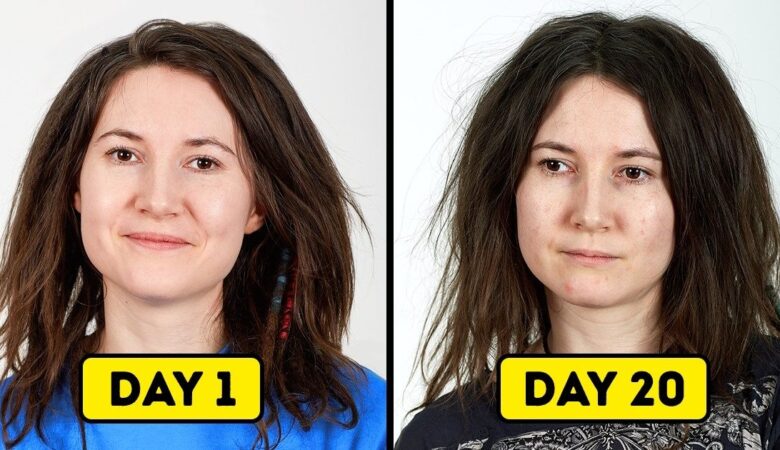




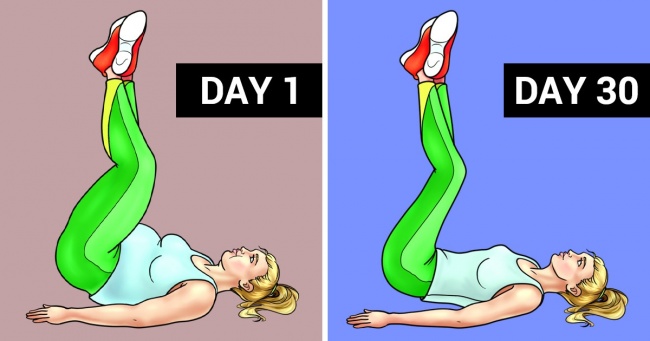
Leave a Reply